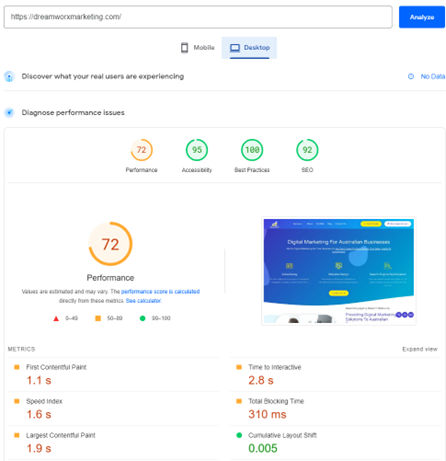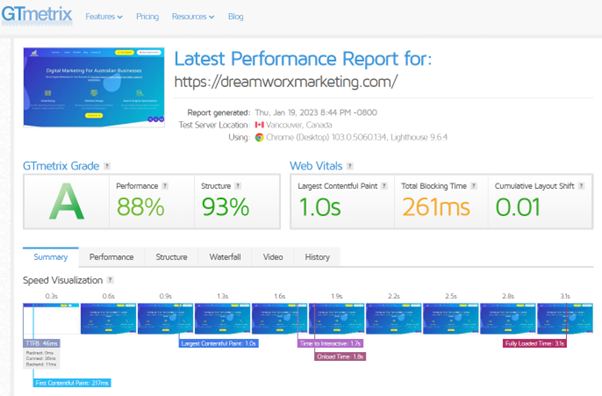
How to use Chat GPT for small business in 2024
It’s been well over a year that Chat GPT has been around. So far I am confident to say that content creators have been observed
No matter how beautiful your website might be, if it doesn’t load fast, your customer will not buy from you. This is true and I am sure you remember your reaction the last time you visited a slow website, don’t you 😊
Advanced website developers make sure that the best practises are followed when a new website is designed. When you hire a professional web designer with experience, slow website speed issues are less likely to occur on your website. However, if you had a small budget and got your website built by your friend’s son, I got you covered.
You might need to take help from a developer if you are not tech-savvy. But before you go about hiring someone, it is better to understand what factors cause a website to slow down.

These are some of the main factors that can cause a slow website speed. Now that you know the factors causing slow website speed, let’s continue to read more about each of them and learn how we can solve them.
You will be surprised that you can solve many of these issues yourself. And for the rest, I am here to help. Send me an email at hello@dreamworxmarketing.com
Website speed is an important factor in user experience (UX) and search engine optimization (SEO). A slow website can lead to a higher bounce rate and lower dwell time, both of these factors can negatively impact your current SEO rankings.
In this post, we will discuss some technical ways to improve website speed.
Need someone to troubleshoot issues with your WordPress website? I would love to help. Book a 30-minute FREE consultation with me. Please click on this link – Select a Date & Time – Speak with Swarn from Dreamworx Marketing

Use performance testing tools like
to identify specific areas of your website that need improvement and measure the effect of your optimizations.
By implementing these technical optimizations, you can improve website speed and provide a better user experience for your visitors.
Keep in mind that website speed is an ongoing process, so it is important to regularly monitor and make improvements as needed.

You can read more about each of these WordPress plugins here.
These are a few examples of the tools available for minifying and combining code on WordPress websites, and each one has its own set of features and capabilities. It’s important to choose the one that best fits your project needs and skillset. Also, keep in mind that it’s important to test your website after implementing the plugin to ensure that it does not break the website or affect the functionality.
HTTP (Hypertext Transfer Protocol) requests are made whenever a web page loads, and they can add significant time to the page load time. Here are a few ways to minimize the number of HTTP requests on a website:
By implementing these methods, you can minimize the number of HTTP requests on your website and improve the page load time. Keep in mind that website performance is an ongoing process, so it is important to regularly monitor and make improvements as needed.
Cloudflare – (The Web Performance & Security Company) is a Content Delivery Network (CDN) that can be used to improve website speed and security. Here are the steps to use Cloudflare CDN on your website:
By using Cloudflare CDN, you can improve your website’s speed and security. Cloudflare also provides additional features like DDoS protection, SSL certificate, and Firewall to enhance your website’s security. Keep in mind that it may take some time for the changes to propagate and fully take effect.

GTmetrix | Website Performance Testing and Monitoring is a website performance testing tool that can help you analyze and optimize your website’s speed. Here are the steps to use GTmetrix:
GTmetrix is a powerful tool that can help you identify areas of your website that need improvement and measure the effect of your optimizations. Keep in mind that website performance is an ongoing process, so it’s a good idea to test your website regularly and make improvements as needed.
For all queries, feel free to send us an email at hello@dreamworxmarketing.com
Need help with building a marketing strategy for your small business? I would love to help. Book a 30-minute FREE consultation with me. Please click on this link – Select a Date & Time – Speak with Swarn from Dreamworx Marketing


It’s been well over a year that Chat GPT has been around. So far I am confident to say that content creators have been observed

Every local business in Australia has one expectation: that both their online and offline customers as well as the search engines expect them to be
We’re relentlessly focused on getting our clients more sales, and qualified leads thus hitting their business’s growth goals. From service-based businesses to e-commerce businesses and startups, we have helped businesses in almost all major niches.
We start with an initial audit of your business website, social channels and discover the growth opportunities
We map out a plan to get on top of each growth opportunity by using tried and tested digital marketing strategies
We measure & improvise implemented growth strategies regularly to ensure that your business stays ahead

